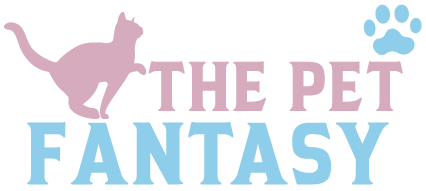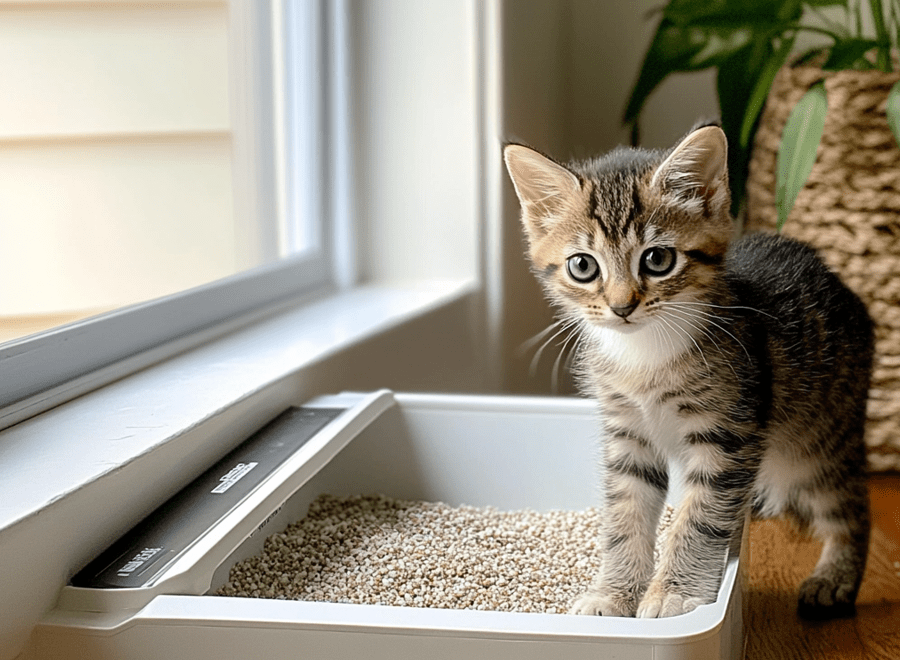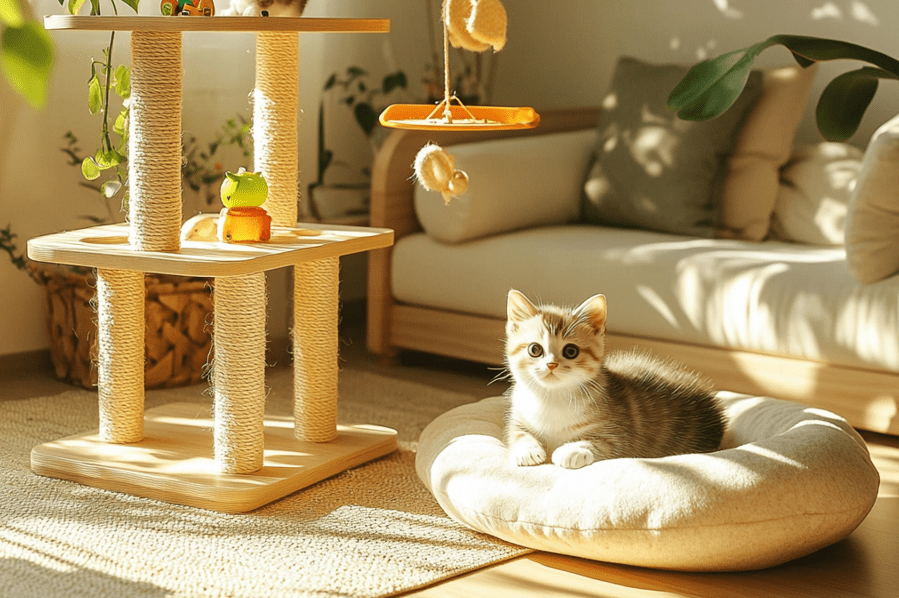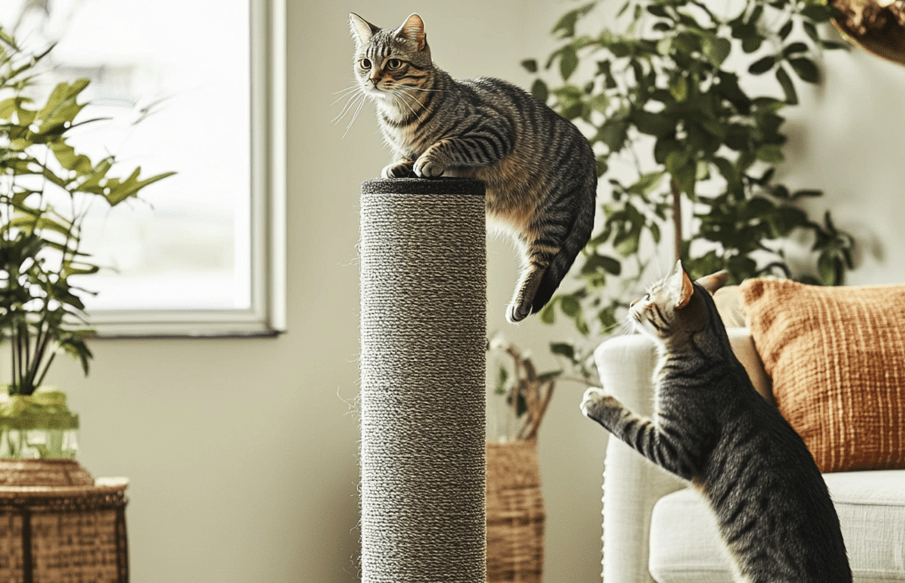
A critical step in preventing a cat from scratching furniture is to teach your feline to use a scratching post. The first step to help cats with scratching is providing the proper scratching post. Choosing a scratching post that your cat is naturally drawn to in the first place will make it much easier to encourage its use. Follow these tips to train your cat to use the post and stop wrecking your furniture or carpets once you’ve made this selection.
To watch the summary of this article, just watch this video-
Choose the Right Area for Cat Scratching Posts Before Training
This choice of optimal locations in your home will also entice your cat to utilize her scratching posts properly. The location of these posts should consider the typical cat scratching tendencies. Placing the posts in discreet or out of the way places, like corners, may be aesthetically pleasing to us but these spots are also not ideal from your cat’s point of view. Understanding this, it is plain to see why these areas may not work as well for them when you take into consideration their natural instincts.
Some basic reasons for cats scratching Behavior:
Territorial Communication:
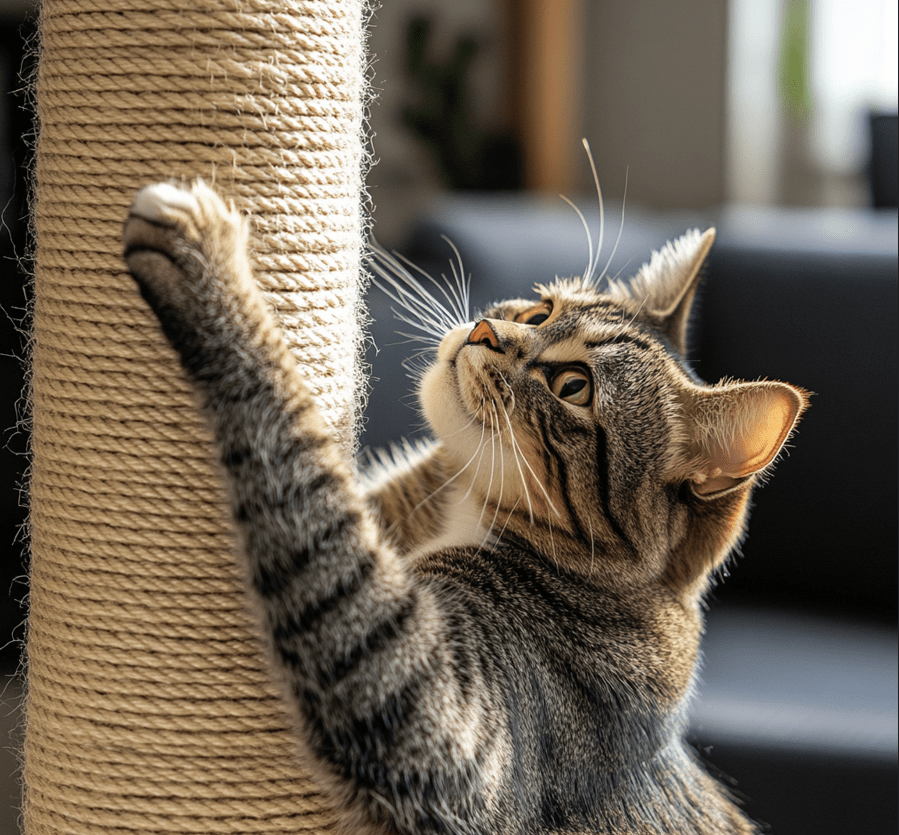
Another thing to remember is that cats scratch in order to mark territory so it makes sense to post the cat scratching post at a place where you want your cat to be territorially bonded. Their visual and scent marks left by the glands in their paws are all clear signals for other cats. Hence, a renowned spot is preferable for cats to scratch than concealed corners. A tall, strong scratching post placed in a high-traffic area will satisfy their need. As soon as your cat learns to scratch on the post, you can slowly move it (within a month) to a more appropriate spot in your home.
Stretch & Muscle Workouts:
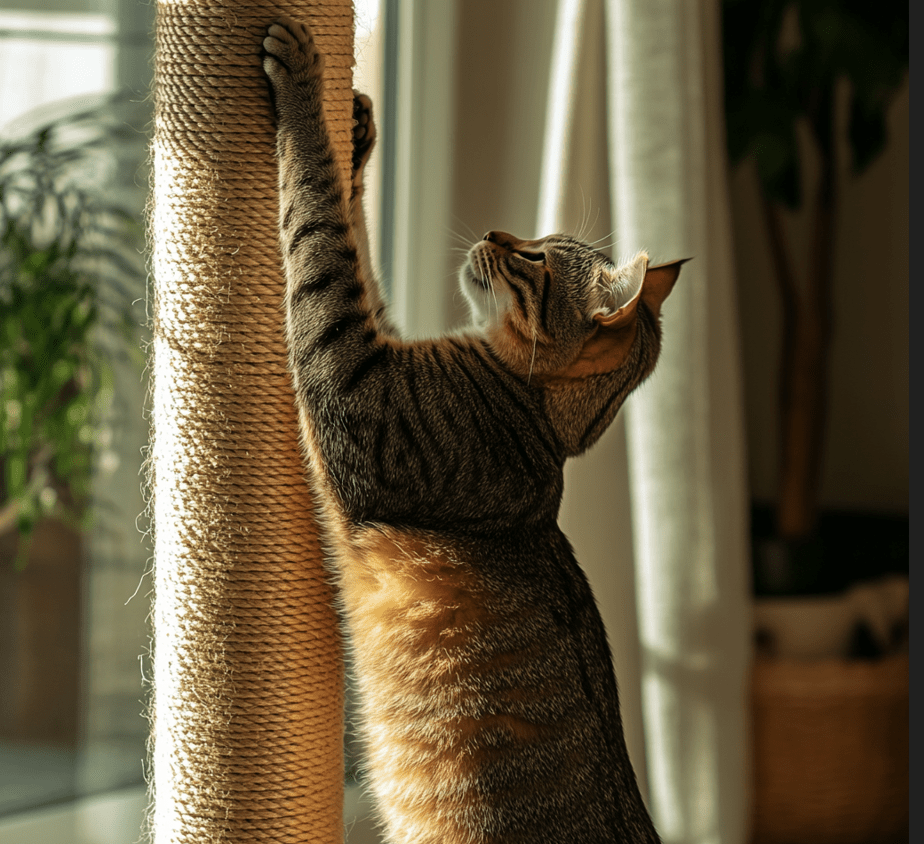
In addition, a stretch by scratching helps cats to exercise and tone the muscles in their shoulders, toes, and feet after they have just woken up from sleep. Since scratching posts allow them to position their bodies at different angles and can be placed near the places where they normally sleep, it will work out.
Redirecting Carpet Scratching:
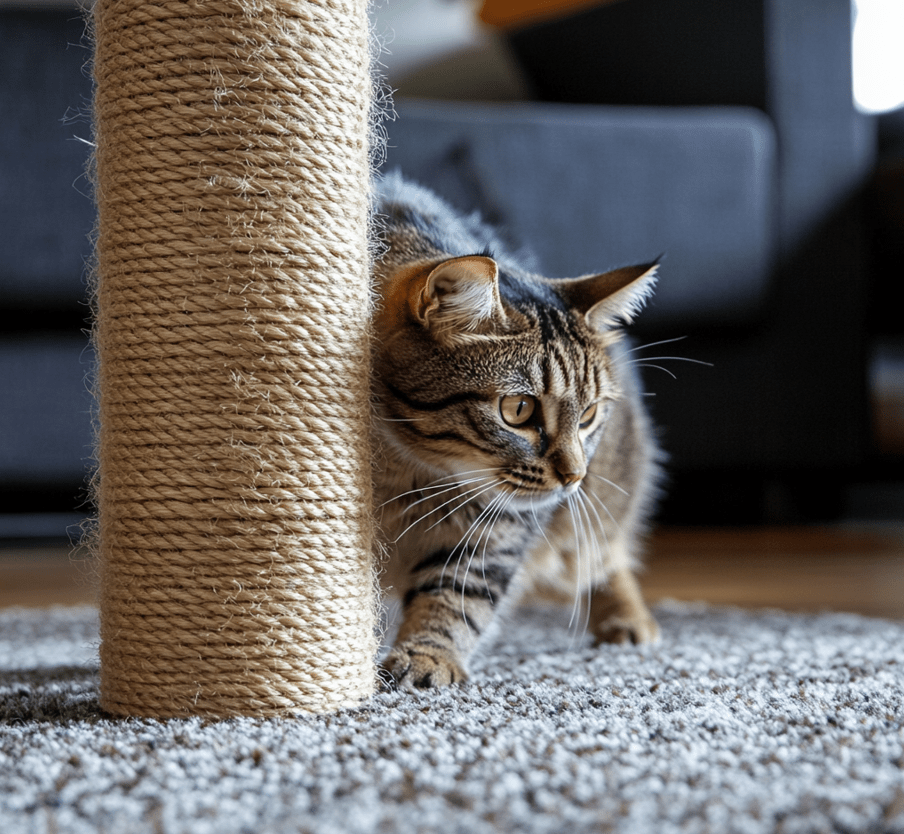
If your cat seems to do a number on the carpet in a different spot, try putting a scratching post or pad right on that spot. Your cat probably already likes that spot anyway so reinforcing the use of the post will be better than ruining your carpet.
Cover the Furniture to Prevent Scratching:
If you have a cat that scratches furniture (intact couches, etc.) cover it up with an extra heavy blanket (tucked in securely) to prevent further damage. Place the scratching post right next to the item that used to be scratched and then, with the cat using the post reliably for a week or two, you can slowly transition it to where you would like it; about an inch per day.
A Final Word on Cat Scratching Post Placement:
Multiple scratching posts placed throughout your home in various locations will be one of the most effective ways to prevent your cat from damaging your carpets and furniture. If your cat is already scratching an inappropriate object or area, step back and try to evaluate these scenarios on how you can apply them. Note whether the scratch marks are high or low, on a vertical or horizontal surface and it is in a corner or under your bed. It is helpful to know this when choosing the best scratching post and pad sizes and locations. Cats often prefer to scratch on vertical, horizontal or angled surfaces but they also like scratching in unusual places such as under beds and inside cupboards.
How to Create Good Scratch Post Etiquette
If your cat is not using her new scratching post right away or shows only casual interest, don’t worry. Some cats may even need more incentive to realize they have a fantastic surface to scratch on. The following are some ways to get your cat started on the scratching post and how to train her into all-but-replacing it from every surface:
Catnip:
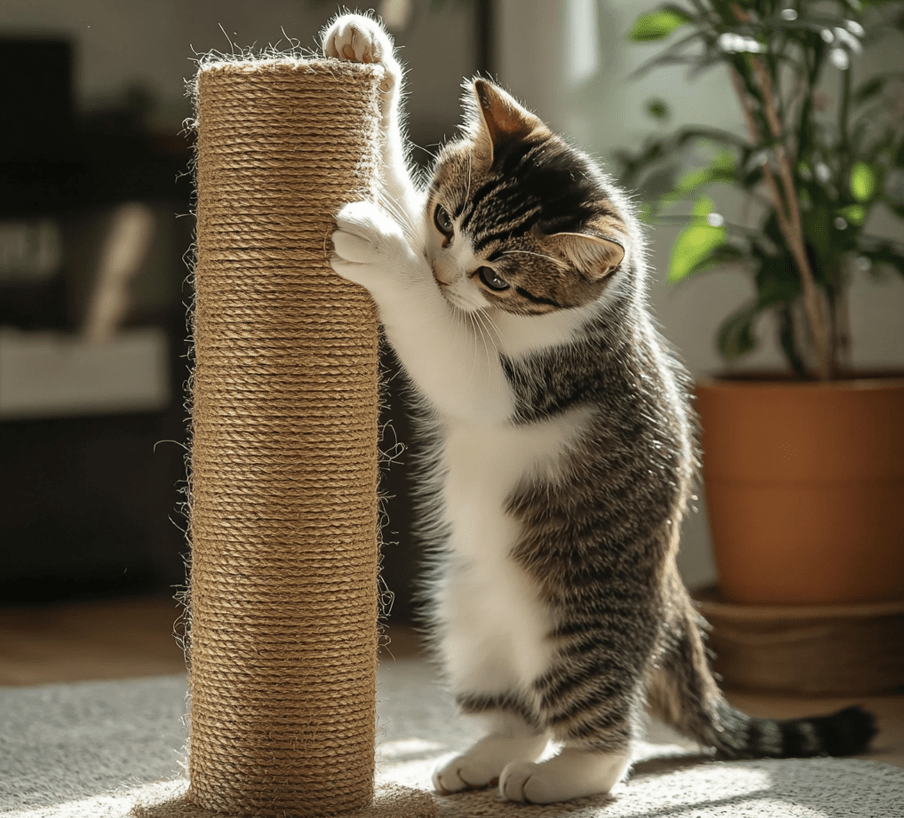
Not all cats succumb to the narcotic effects of catnip when they are kittens, but a large percentage will have a hilarious and intense reaction to it. If your cat is one of those, try putting some extra loose-leaf catnip on the base and top of her scratching post. As she licks more, she will probably start to knead her paws into it and learn that this is a perfect scratching surface for her to use again some other time.
Engagement:
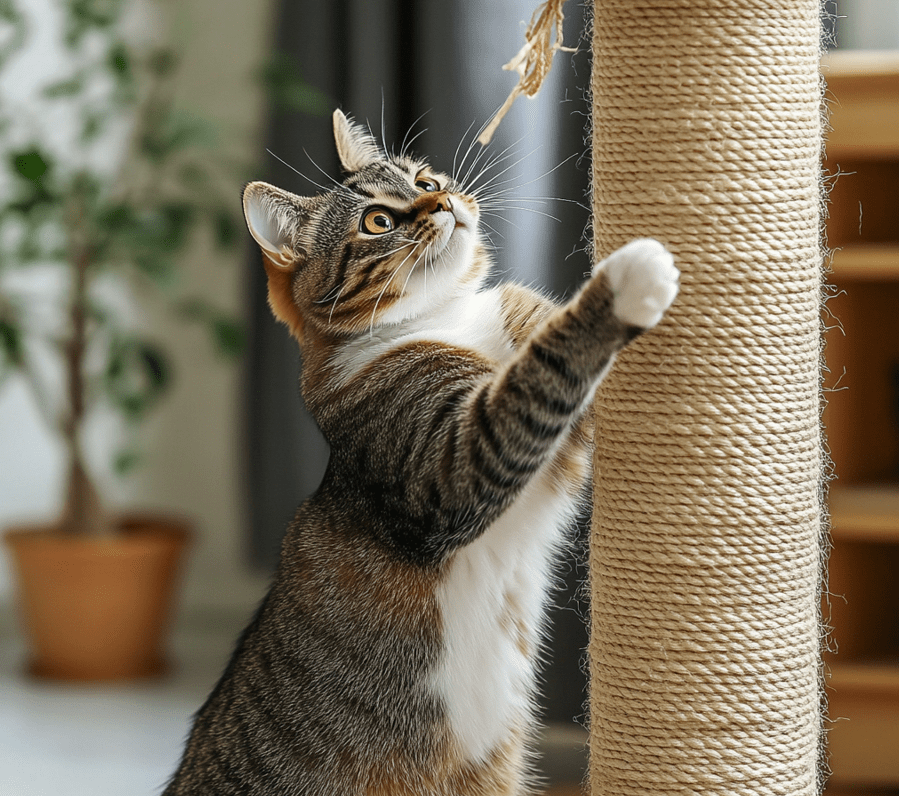
By playing near and on the new scratching post you can help your cat come to appreciate it and feel comfortable using it. If you have a wand-type cat toy, that is especially useful—make like your kitty’s prey and let her attack the toy on her post. Also, hide her favorite toy at the top of the post to encourage her to climb up and get it. Soon, she will learn to enjoy scratching the post too.
Placement:
If your cat has never used a scratching post, try laying it down flat. Pair these tactics with the sprinkling of catnip and get your little ball to chase anything that moves, particularly food and toys. When your cat has been using the post in this position for a few days, you can then slide it into standing upright to give her even more enjoyment.
More than One Cat:
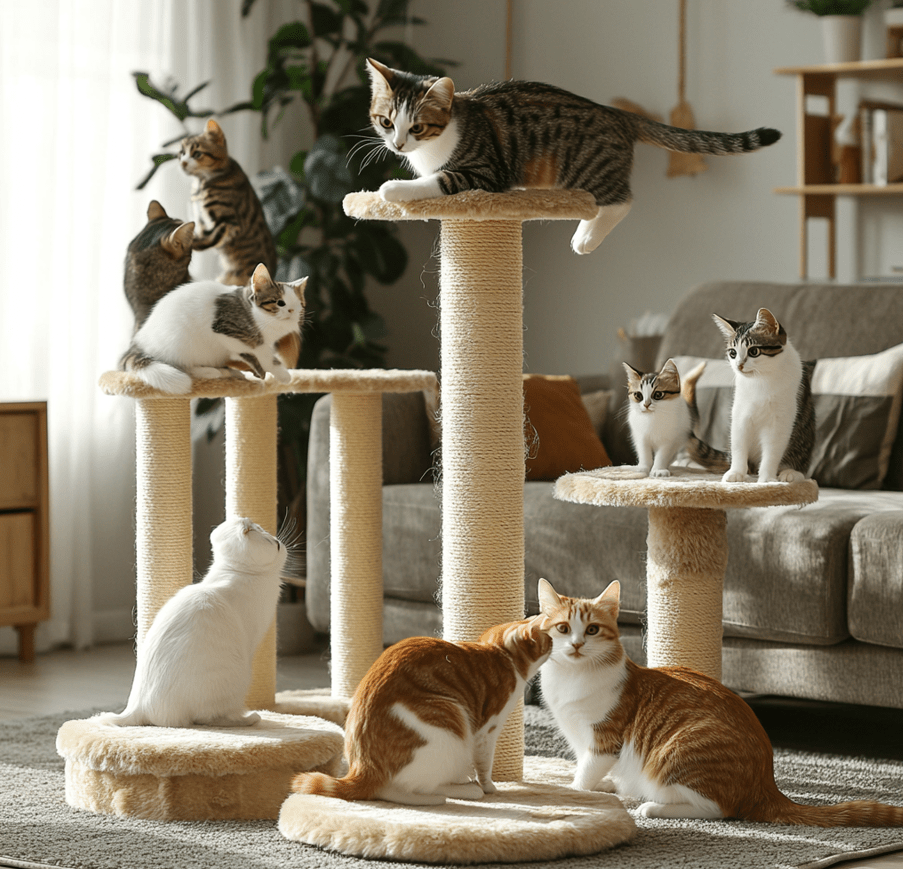
If you have multiple cats, you may need more than one scratching post. Throw small toys and balls around the scratching posts to encourage cats to play with each other.
Cat treats:
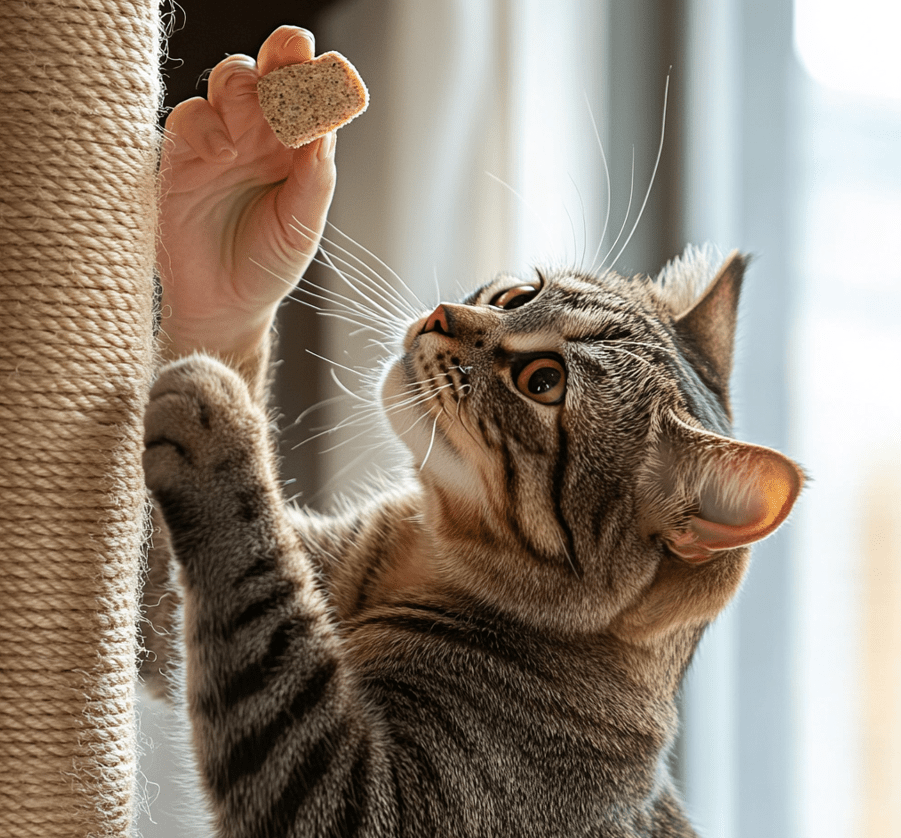
If your cat is a treat lover having a fresh bag of treats while you introduce your cat to scratching posts can be helpful. First, give your cat a treat whenever she sniffs or investigates the post. Once she gets used to using it, give her rewards for putting her paws on it, only rewarding when she starts scratching. You can also try putting treats on top of the post to lure her to climb and get them (outlining a good relationship with the post).
Feliway Spray:

However, for some extra help in enticing your kitty to the scratching post just as you add a little spice of life with the different textures of alternative posts options listed above, consider using Feliway (a spray that mimics feline facial pheromones also known for creating a sense of relaxation among cats). Spraying a few times daily with this remedy, on things in your house that your cat scratches can help remind her that the scratching post is good and get her out of the custom of furniture-scratching.
The thing is when you force cats to use it; they get turned off from the scratching post in general. As we all know cats have a mind of their own and they like to do things at their own pace. Forcing their paws can cause cats to avoid the scratching post. Very young kittens can be somewhat easily trained this way, especially if there are no older cats around to model the correct use of a post. Playing, as mentioned above, works very well with kittens too.
Why Negative Training Methods are Not Effective
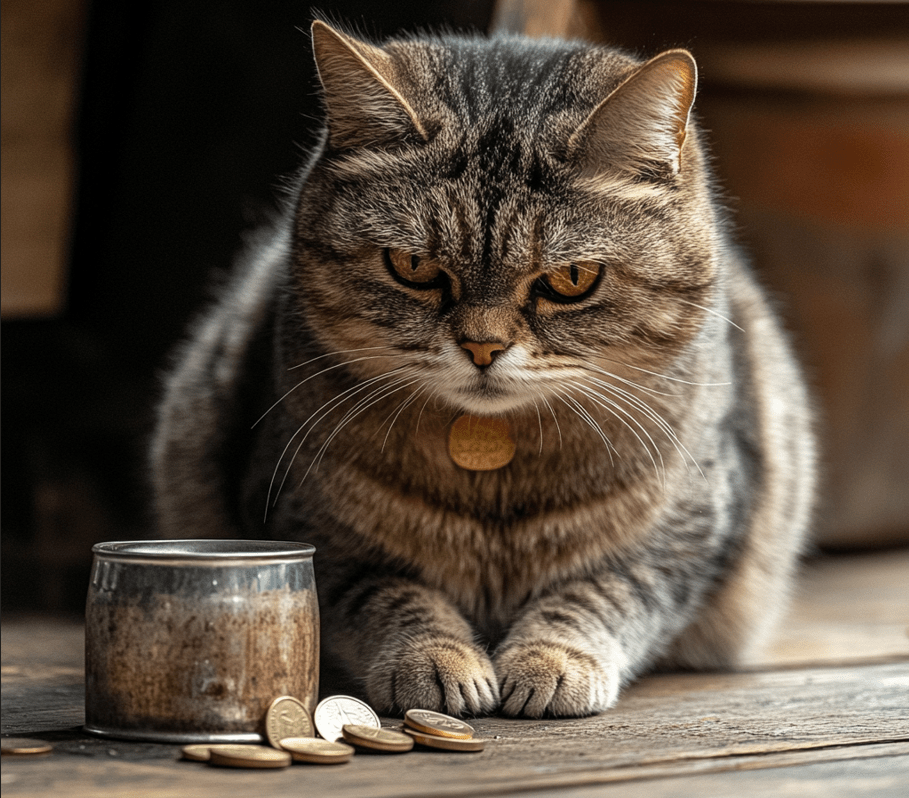
Negative training, on the other hand, is used to essentially punish undesirable feline behaviors by making them result in something negative. These include spraying the cat with water, making loud noises from coins in a can, using mouse traps to scare or injure the cat, shouting at them and hitting them. Unfortunately, these approaches are largely missing the mark and can cause negative repercussions. This form of punishment increases the general stress level in cats and results in behaviors that are hardly acceptable for most pet owners. Put simply, when a cat becomes stressed it often exhibits inappropriate urination or defecation, will scratch furniture, and may become withdrawn and refuse to eat. Instead of stressing, hating and punishing the bad behavior, it is much more important to promote and reward the desired behaviors by scratching at their posts.
Conclusion

After you have taken the proper steps to train your cat how to use a scratching post, but she still has little interest in using it, do not give up just yet — try moving the new scratching post and then see if your cat will be interested in it. It can also be helpful to place the scratching post near a window, especially if there are birds or other wildlife outside to view because your cat may become stimulated and encouraged to scratch. A little patience, and deliberate positioning and positive reinforcement mean your cat will use her scratching posts for preference over your furniture and carpets.
